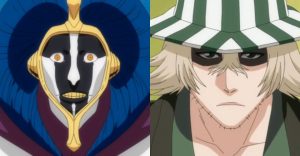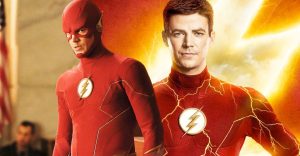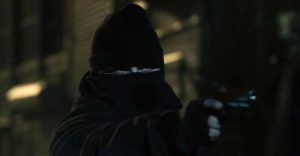Why WB Won’t Be Able To Escape The Snyder Cut

Zack Snyder’s Justice League is not something Warner Bros. will be able to make people forget any time soon. In the relatively short time frame since the release of the long chanted-for Snyder Cut, it has become clear that Warner Bros. has a strong lack of interest in allowing Snyder to wrap up the remainder of his planned five-movie arc, of which the Snyder Cut represents part three. Snyder himself has stated this point repeatedly before and since the film’s release, even going as far as to describe Warner Bros. as being “aggressively anti-Snyder“, while the studio itself reportedly regards the film as “a storytelling cul-de-sac.“
Putting aside that the amount of groundwork the film lays for future storytelling makes it anything but a cul-de-sac, such a description of the Snyder Cut represents a stark contrast against not just what it was before it was released, but what its become since then. Moreover, when laid up against Warner Bros.’s own purported plans for DC films, the Snyder Cut, along with the unmade movies that it sets up, has not been the cut-and-dried finale that many expected it to be. The film’s release has led to widespread calls for more of Snyder’s story with the new hashtag, #RestoreTheSnyderVerse.
As of right now, Warner Bros. has displayed no intention of giving the SnyderVerse the greenlight. However, the situation is no longer as simple as fans pushing for the renewal of a canceled TV show, the continuation of a film series after the most recent entry bombed, or even the initial campaign for the Snyder Cut itself. Between the currently articulated plans for the DCEU by Warner Bros., the popularity the Snyder Cut has seen, and the interest that has arisen in the SnyderVerse being restored, the Snyder Cut, and by extension the SnyderVerse, are now the elephant in the room for the entire franchise (as is Ray Fisher’s controversial dismissal from The Flash).
WB Tried To Bury The Snyder Cut

When discussing the growing interest in seeing Snyder’s five-part arc finished, it’s important to remember the Snyder Cut being released at all was very much an uphill battle. Following consistent denials of the movie’s very existence, a major social media blitz on the two-year anniversary of the theatrical version’s release finally pushed it past the point of no return, with news that the Snyder Cut would debut on HBO Max arriving on May 20, 2020. Even then, Warner Bros. repeatedly showed clear disinterest in continuing Snyder’s story beyond that point.
From first proposing simply releasing the cut unfinished on HBO Max to asking Snyder to remove Wayne T. Carr’s Green Lantern from the final scene (with Snyder replacing him with Martian Manhunter), Warner Bros. has been adamant that Snyder’s arc not continue beyond the Snyder Cut. Though getting the film itself released took significant effort on the part of both fans and Snyder, it nevertheless came to pass. What’s more, while ignoring the #ReleaseTheSnyderCut hashtag might have been one thing, now that the movie’s out for the whole world to see and has been all-around quite well-received, numerous factors are significantly complicating and even impeding the studio’s desire to simply move on.
The Nature Of The Snyder Cut Is Keeping People Talking About It

By being a movie long suppressed from general release and one that had to be campaigned for so strenuously, there was an almost mythic nature about the Snyder Cut before it was announced. Knowing the version of the movie released in 2017 was clumsily cobbled together with last-minute reshoots and the haphazard digital removal of Henry Cavill’s Mission: Impossible – Fallout mustache, the story of Snyder’s original version being held back for so long made it into a sort of modern-day movie legend.
Snyder’s social media teases of the film only strengthened the determination of fans to keep pushing for it, as these were contrasted with continuous assertions that the film itself did not exist in any releasable form, or on a more subjective level within social media chatter, that it wouldn’t be a substantial improvement on the theatrical cut. Adding to this was the fact that Warner Bros. could not get DC movies out from under the Snyder Cut’s shadow, and while Aquaman and Joker both surpassed $1 billion worldwide, the Snyder Cut reliably popped up in some way every time a new DC movie was hitting theaters (Jason Momoa’s own open advocacy for its release during the Aquaman press tour being one of the bigger powder kegs for the film).
When the Snyder Cut was finally released, the path to that point told as much of a story as the movie itself. Even massive tentpoles are seldom, and quite possibly never, released under anything like the kind of circumstances that Snyder Cut has been, and the specifics of how it happened have made the film a much bigger deal than ever. With that, and how the Snyder Cut ends with a set up for further movies in the SnyderVerse, the movie’s story is also an ongoing one.
The Term “Snyder Cut” Is Now Part Of Movie Vernacular

Aside from its basic popularity as a movie, the term “Snyder Cut” itself has taken on a life of its own. #ReleaseTheSnyderCut has specifically entered speech within conversations around the film industry as a shorthand for undoing an artistic error, being translated into High Valeryian in a 2019 Game of Thrones promo and being spoofed on The Simpsons as “#UnReleaseTheSnyderCut”. The Hanes clothing brand has similarly jumped in with a clothing charity drive organized on social media using the Snyder Cut and SnyderVerse hashtags, similar to Subway’s previous entry into the charitable wing of the Snyder Cut campaign in late 2019. The term has even seeped into the conversation of Snyder’s newest movie Army of the Dead, with Netflix assuring viewers on Twitter that “this IS the Snyder Cut.” Outside of movies, the term “Snyder Cut” is increasingly used to reference an alternate, unseen, better version of just about anything, from the outcome of a sporting event to the entirety of the year 2020.
The Snyder Cut as both a term and a movie has, in essence, become a staple of chatter around filmmaking, superhero movies, DC films, and social media. Beginning as a hashtag that fueled debate but which many believed would never bear fruit, the Snyder Cut is now a wholly mainstream topic, and one Snyder himself is regularly asked about in interviews. Snyder’s even continuing to periodically drop more information about the film and his overall intentions for the franchise, such as an image of Carr’s Green Lantern, while Joe Manganiello has done the same himself with respect to Ben Affleck’s Batman movie and the Deathstroke origin film. All of that leads right into the final factor that’s preventing the Snyder Cut and the #RestoreSnyderVerse hashtag from fading away.
People Want to Know What Happens After the Snyder Cut

Though Warner Bros. has stated their stance on not continuing the SnyderVerse, the audience for the Snyder Cut has reacted in the opposite way. Calls for Snyder’s arc to be finished swiftly arose after the Snyder Cut was seen. Indeed, it’s drawn support from far more than the fans who pushed for the Snyder Cut itself to happen, including from celebrities some big celebrities, like Brad Paisley, who tweeted the #RestoreTheSnyderVerse hashtag, or Leslie Jones, who performed a comedy-filled commentary of the movie.
There’s also a good amount of detail known about where Snyder intended to take things, courtesy of a collection of whiteboards displayed at an AT&T exhibit earlier this year. Though Snyder has asserted subsequent behind-the-scenes alterations make them more of a loose blueprint than a beat-for-beat layout, the basic outline of Justice League 2 and Justice League 3 continues to drive growing interest in seeing the story completed. Similarly, Joe Manganiello’s description of elements of both Affleck’s Batman movie and the Deathstroke film have also fueled interest with both being projects set within the SnyderVerse.
By contrast, while Warner Bros. has a number of exciting movies in the works, they haven’t managed to build enough hype to distract the persistent interest in Snyder’s original plans. Additionally, the cancellation of the in-development New Gods and Aquaman spin-off The Trench in particular highlights the abundance of announced DC movies that have never gotten off the ground. Though numerous DC movies are either actively filming, such as Black Adam, or have completed production like Matt Reeves’ The Batman, the studio has not managed to communicate a concise narrative plan for the franchise. Furthermore, the intervening months since last year’s DC FanDome have begun to negatively impact the hype around DC movies and TV shows co-existing in a Multiverse due to the studio’s inability to articulate concrete plans for what they intend to do with it. All told, Warner Bros. assertion that they are moving on from the SnyderVerse has not been followed by clear and commensurate plans for what they plan to do instead. All the while, the basic outline for the SnyderVerse, whether in the Justice League sequels or related projects like Affleck’s Batman film and the Deathstroke movie have been far more clearly laid out, with interest in them continuing to grow.
With the Snyder Cut out and calls for the SnyderVerse’s return continuing, the blueprint that’s been presented of the unrealized films in Snyder’s arc is doubtlessly going to continue to loom over DC movies just as the Snyder Cut itself once did. Whether Warner Bros. will have a change of heart on their present stance on the SnyderVerse, and what would need to take place for that to happen, remain major question marks. What is not unknown, though, is that Zack Snyder’s Justice League and the roadmap that it sets up have opened a door that’s now never going to be closed.
- The Suicide Squad (2021)Release date: Aug 06, 2021
- The Batman (2022)Release date: Mar 04, 2022
- DC League of Super-Pets (2022)Release date: Jul 29, 2022
- Black Adam (2022)Release date: Oct 21, 2022
- The Flash (2023)Release date: Jun 23, 2023
- Aquaman and the Lost Kingdom (2023)Release date: Mar 17, 2023
- Shazam! Fury of the Gods (2022)Release date: Dec 16, 2022
About The Author


















